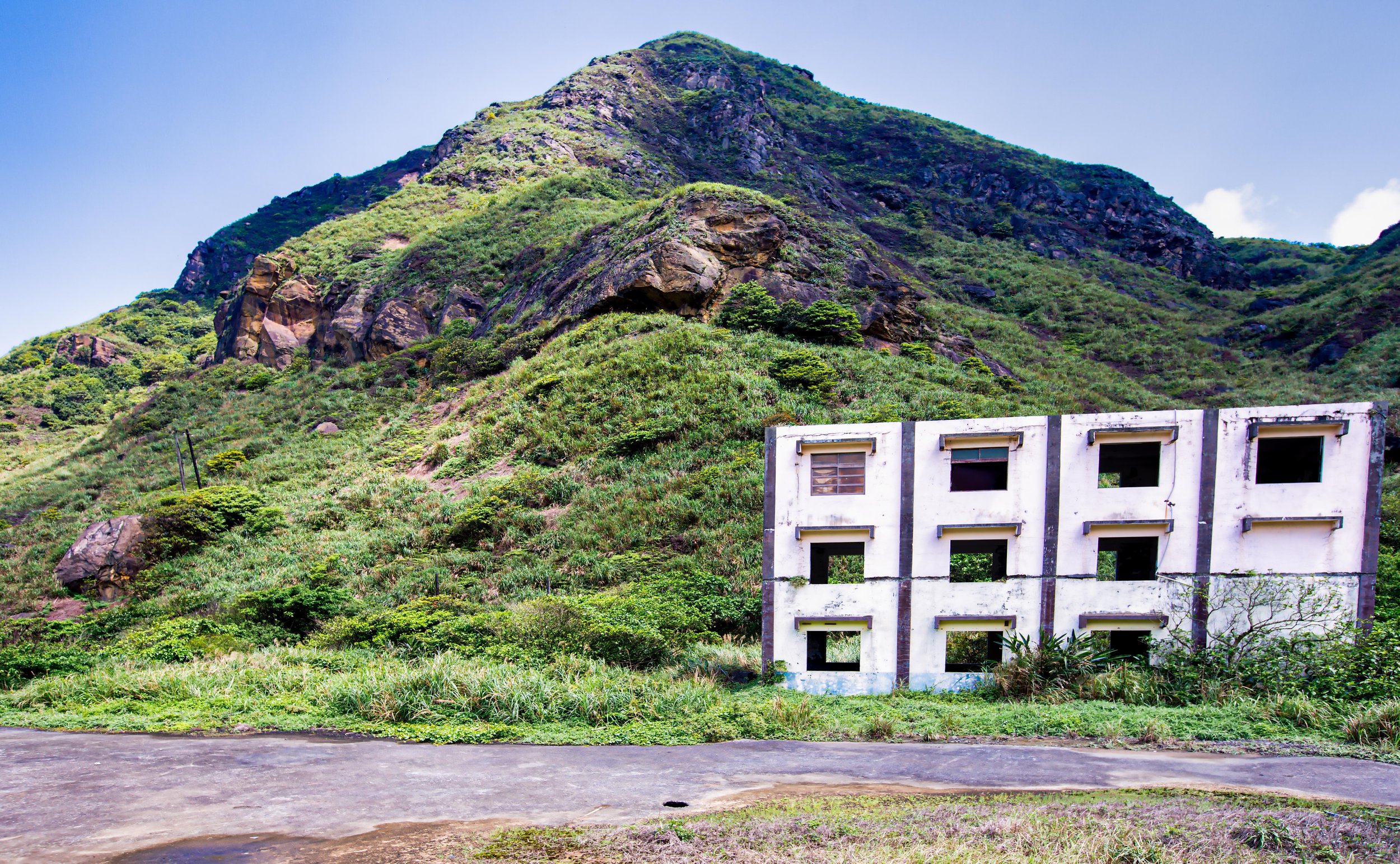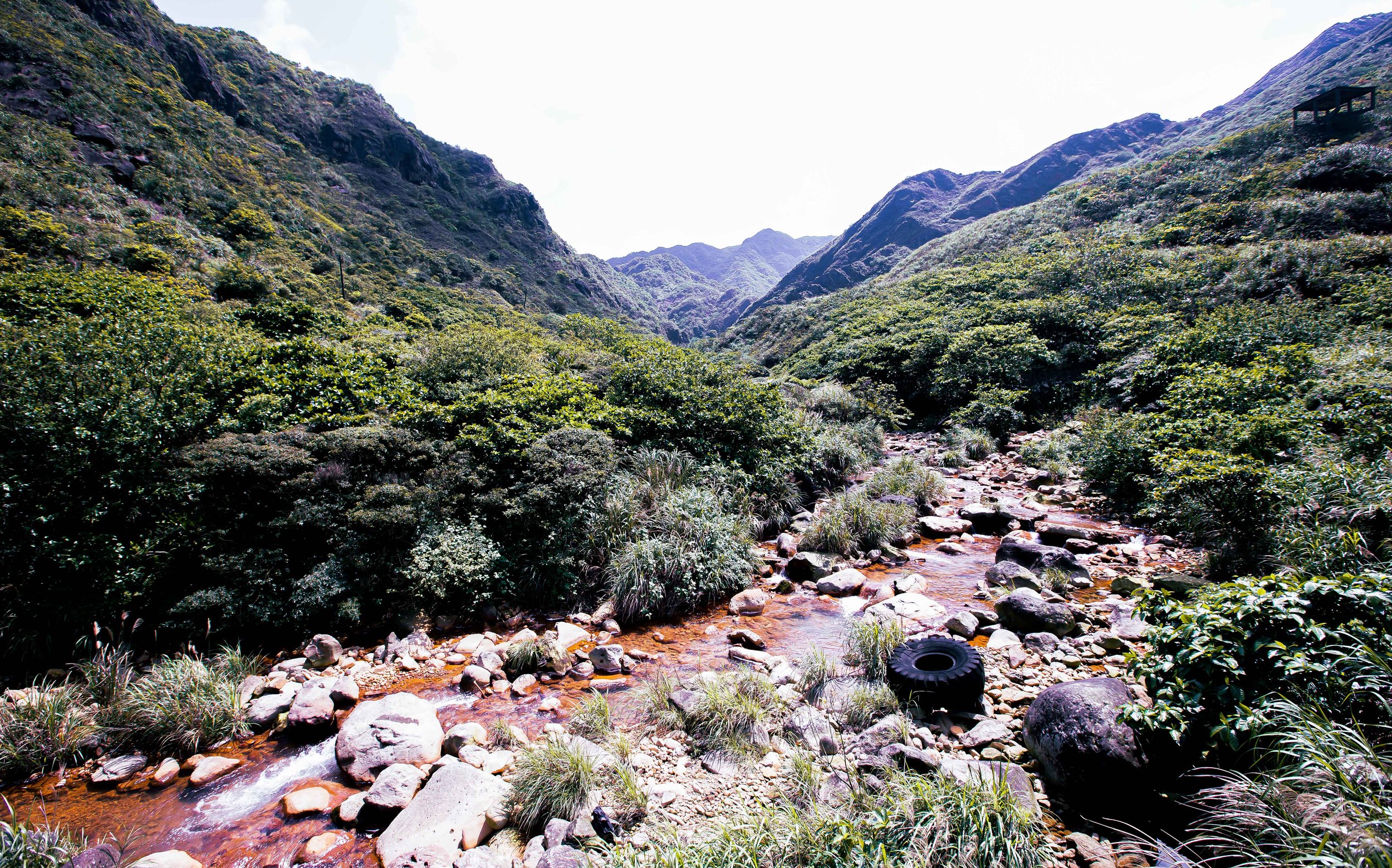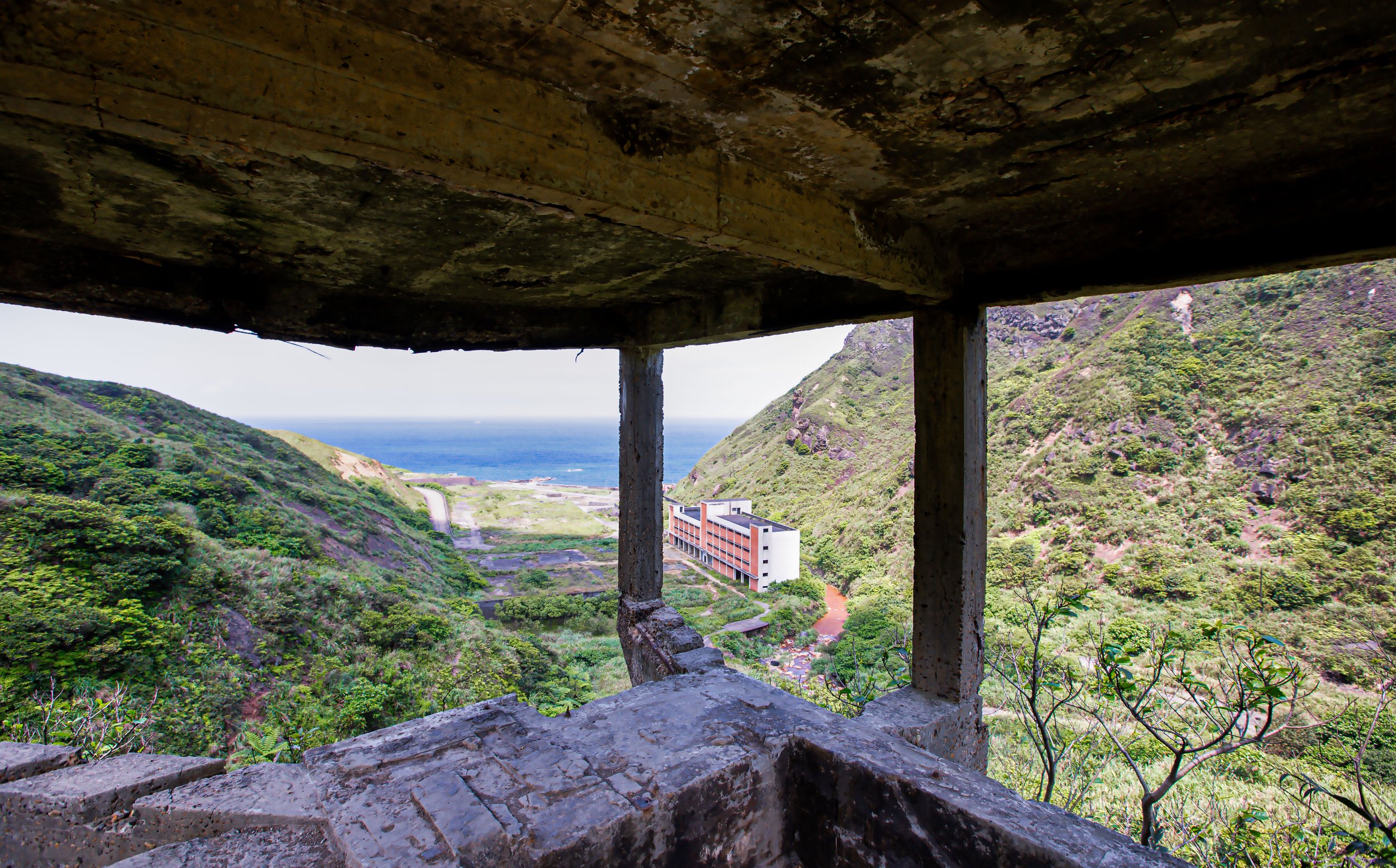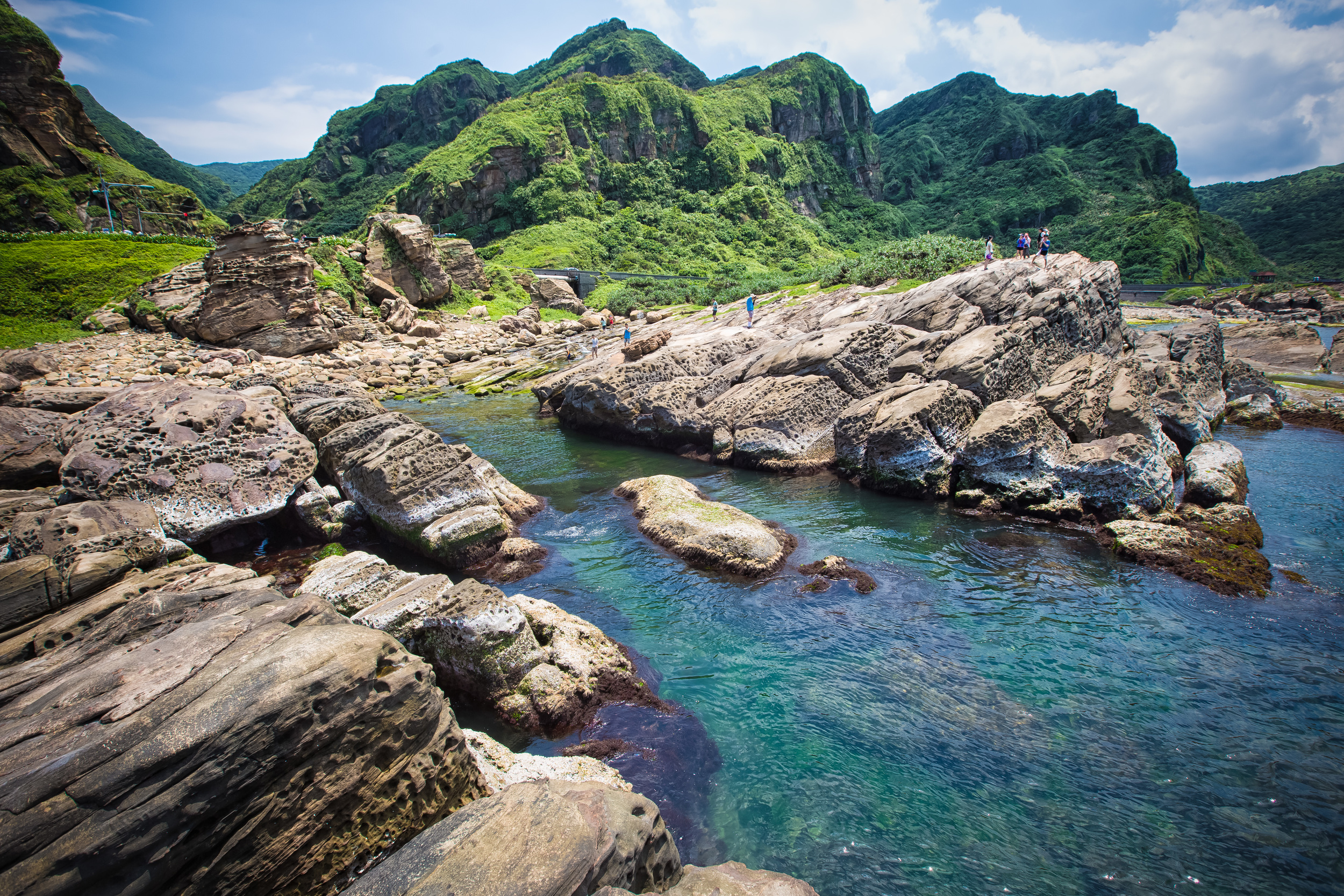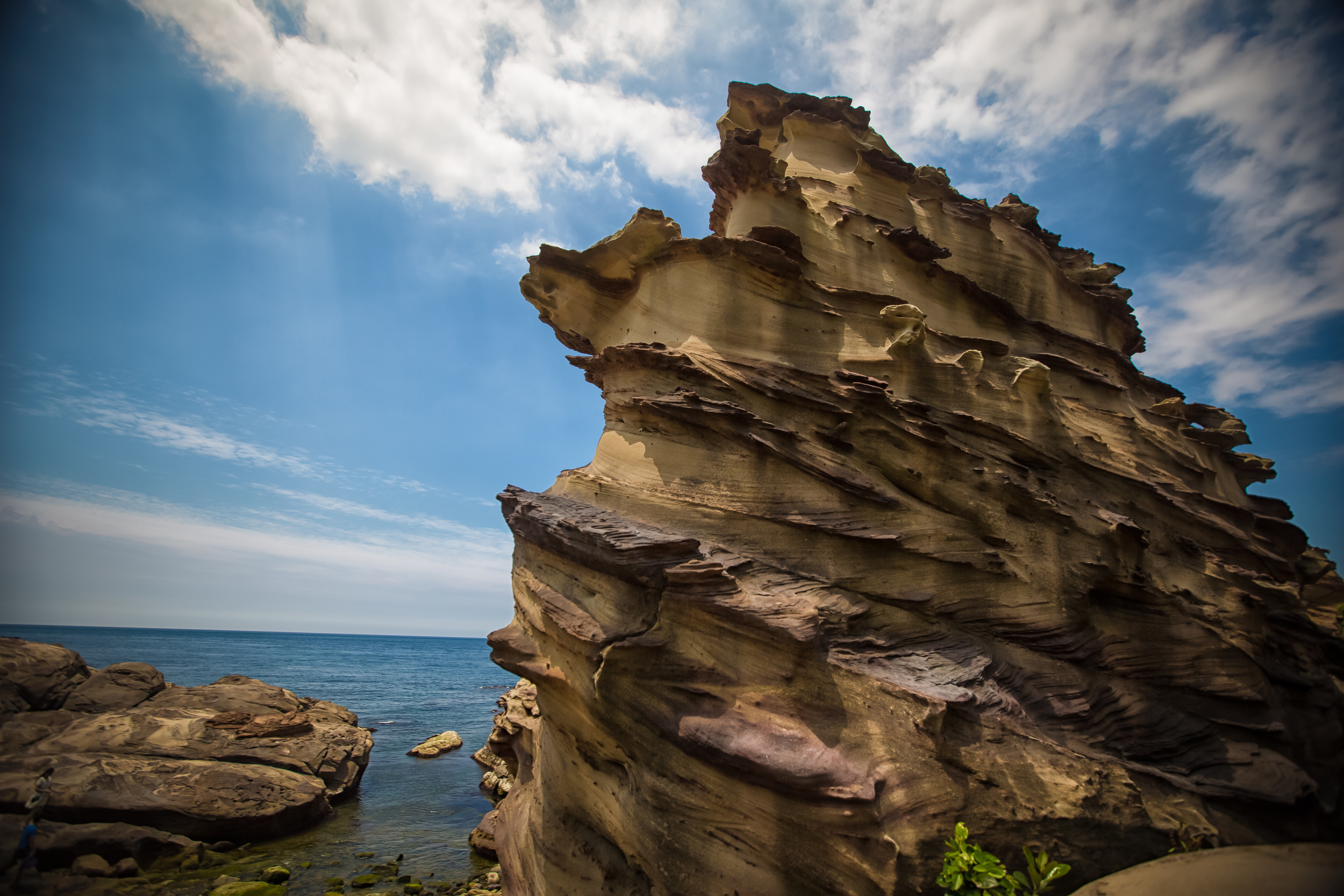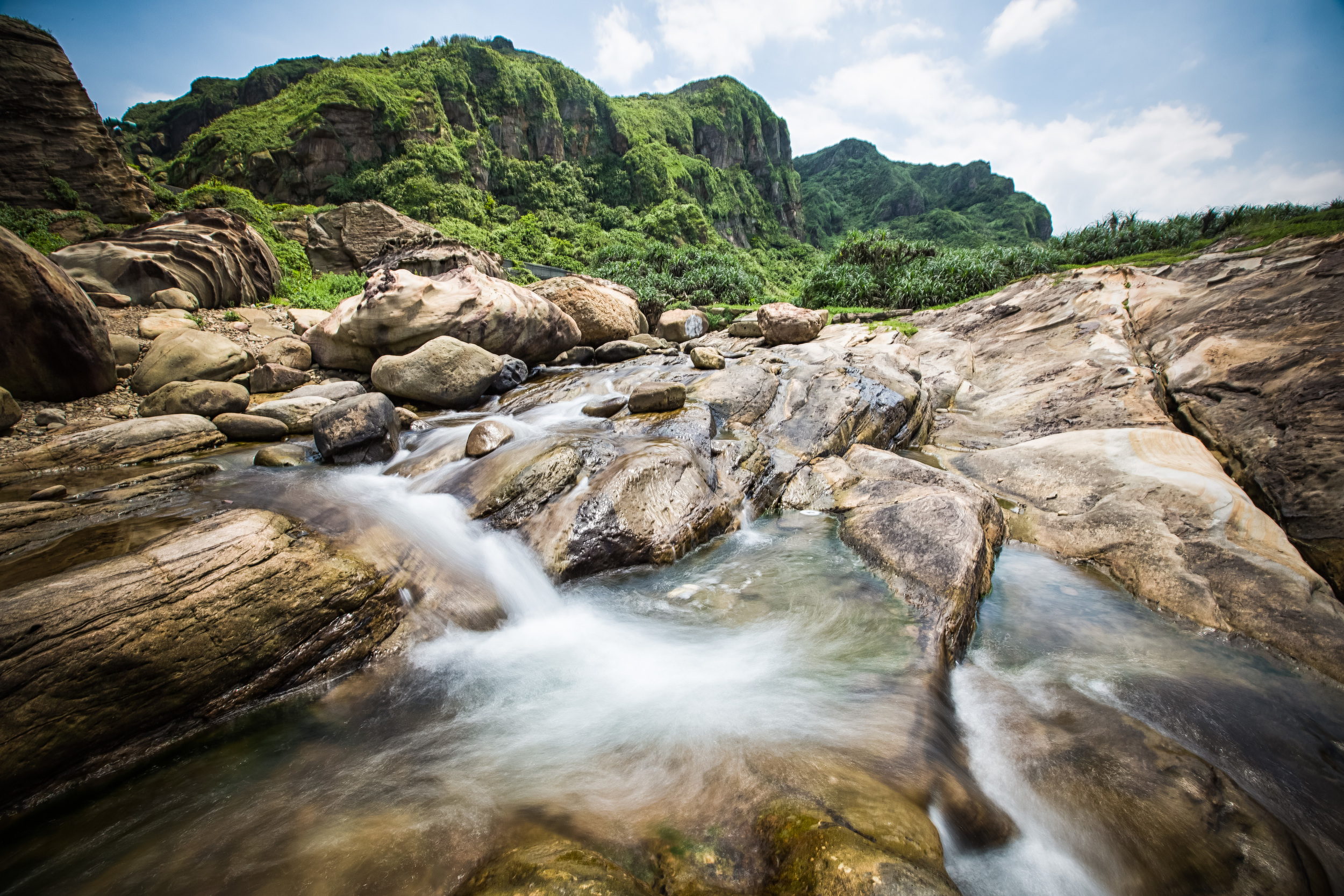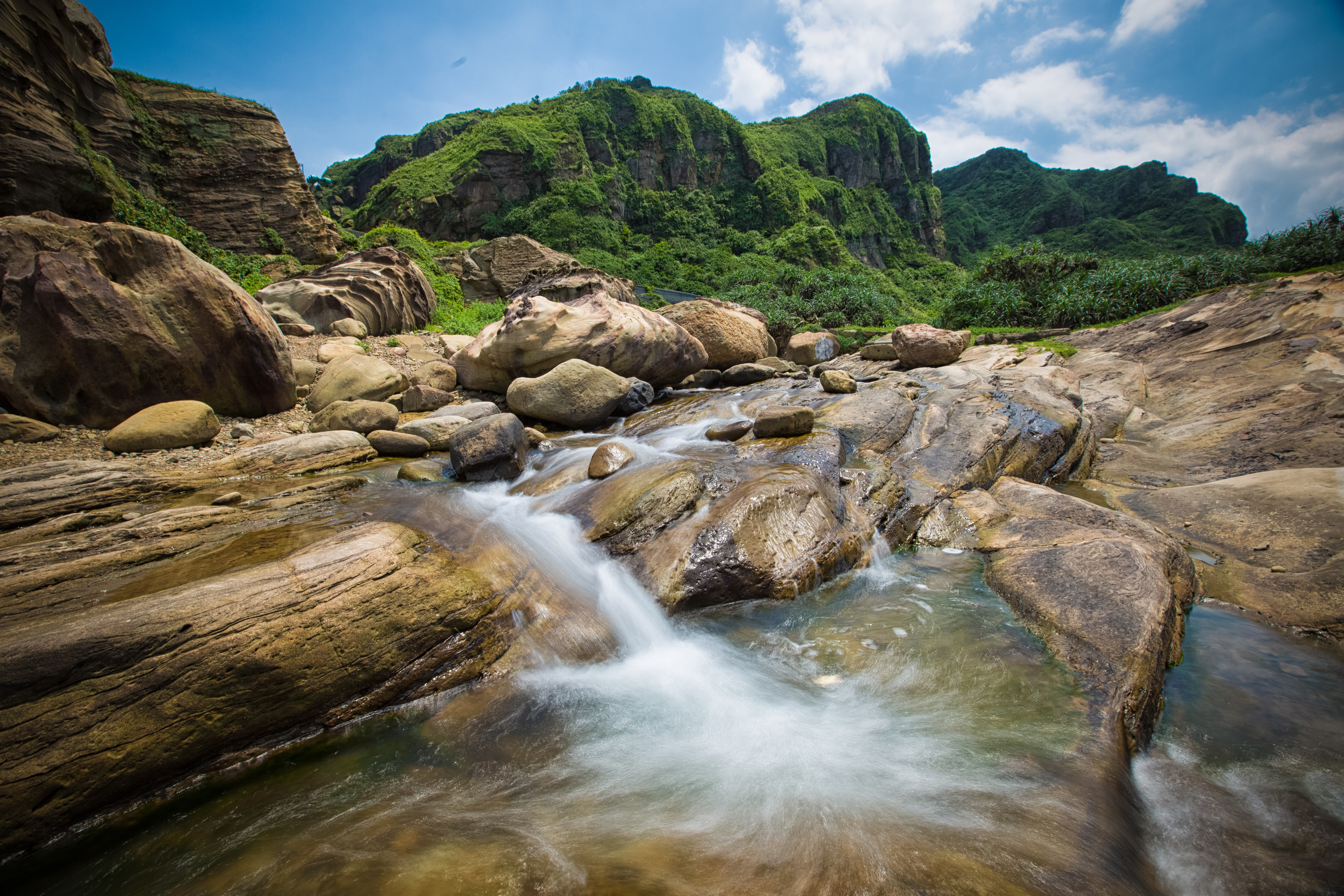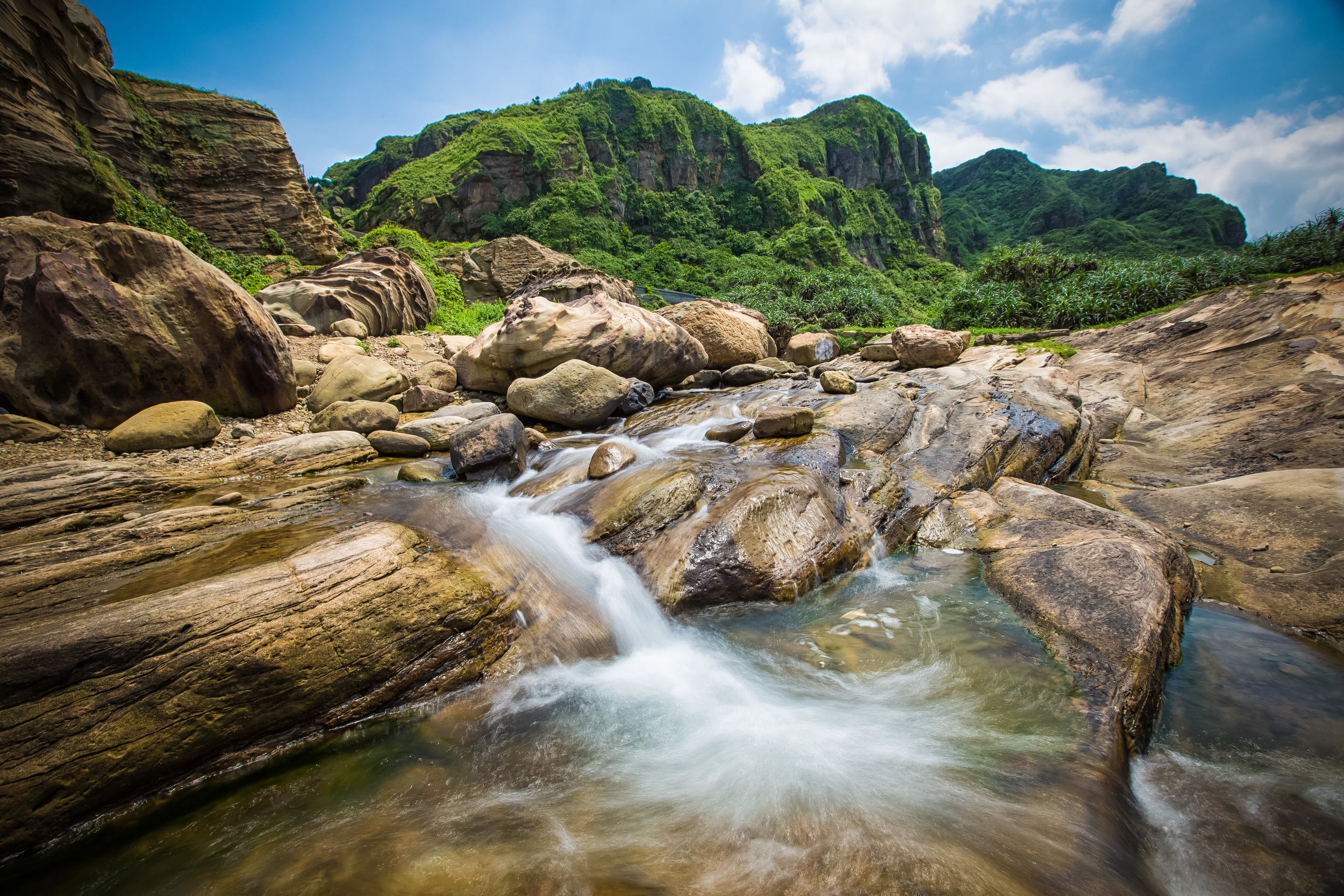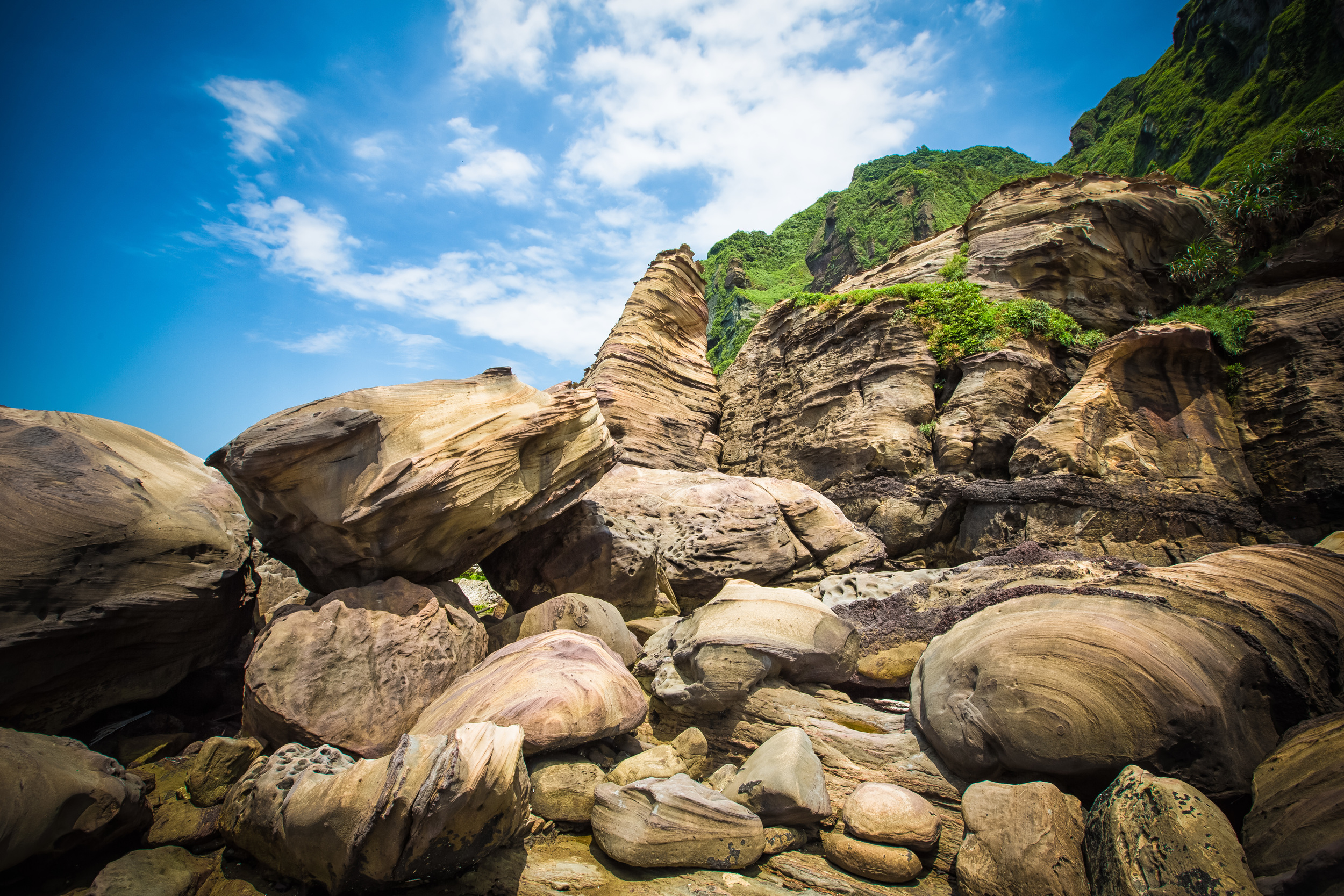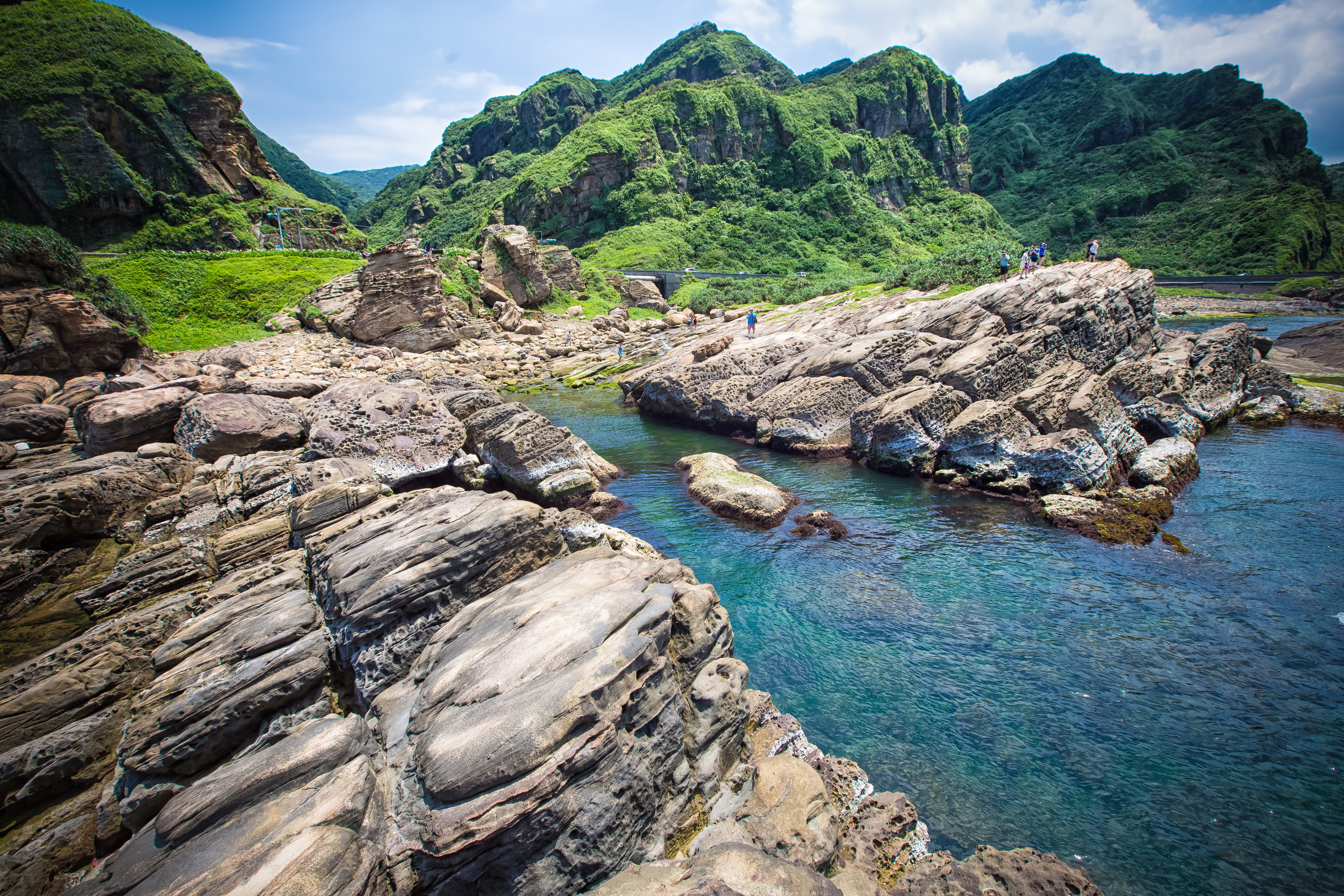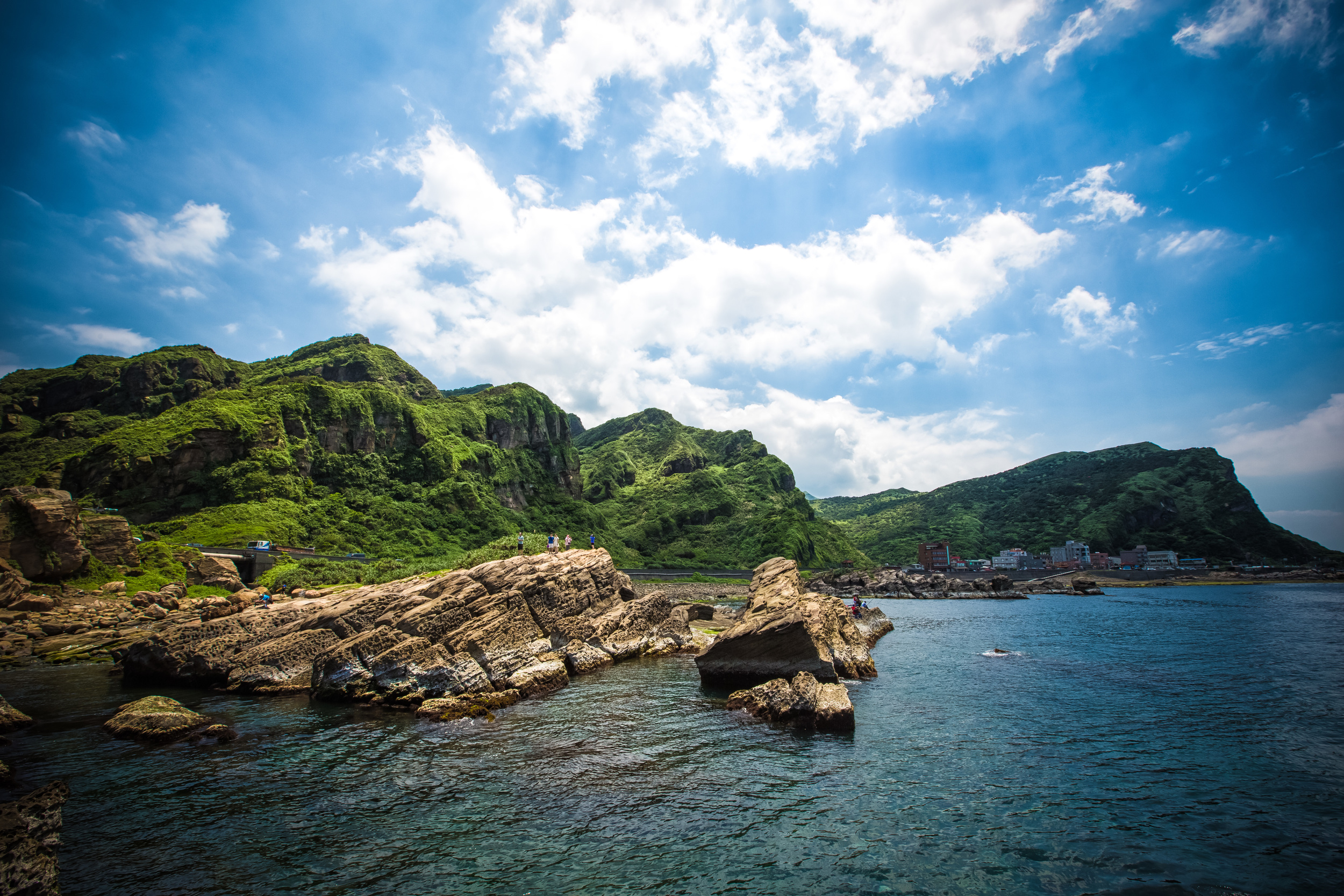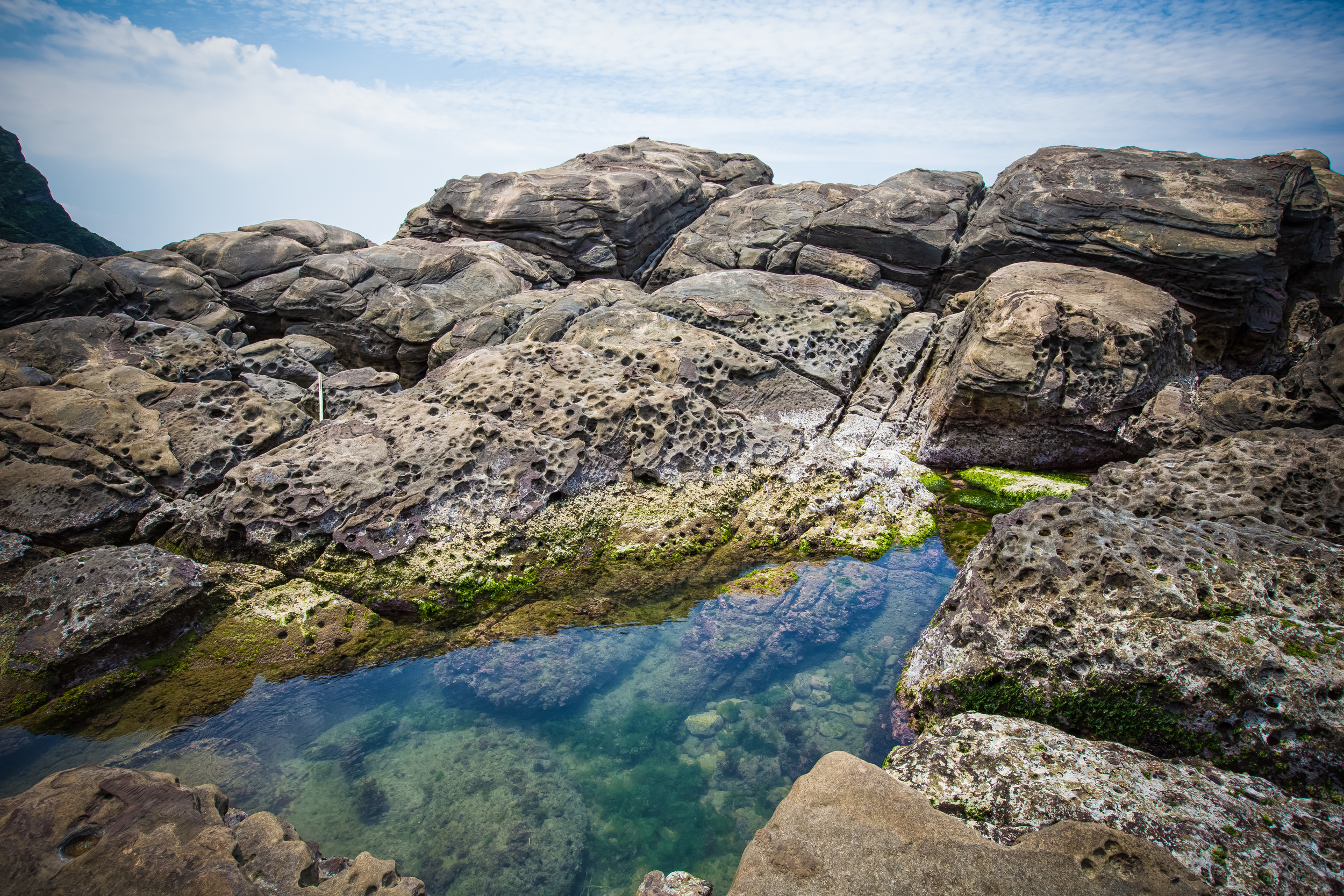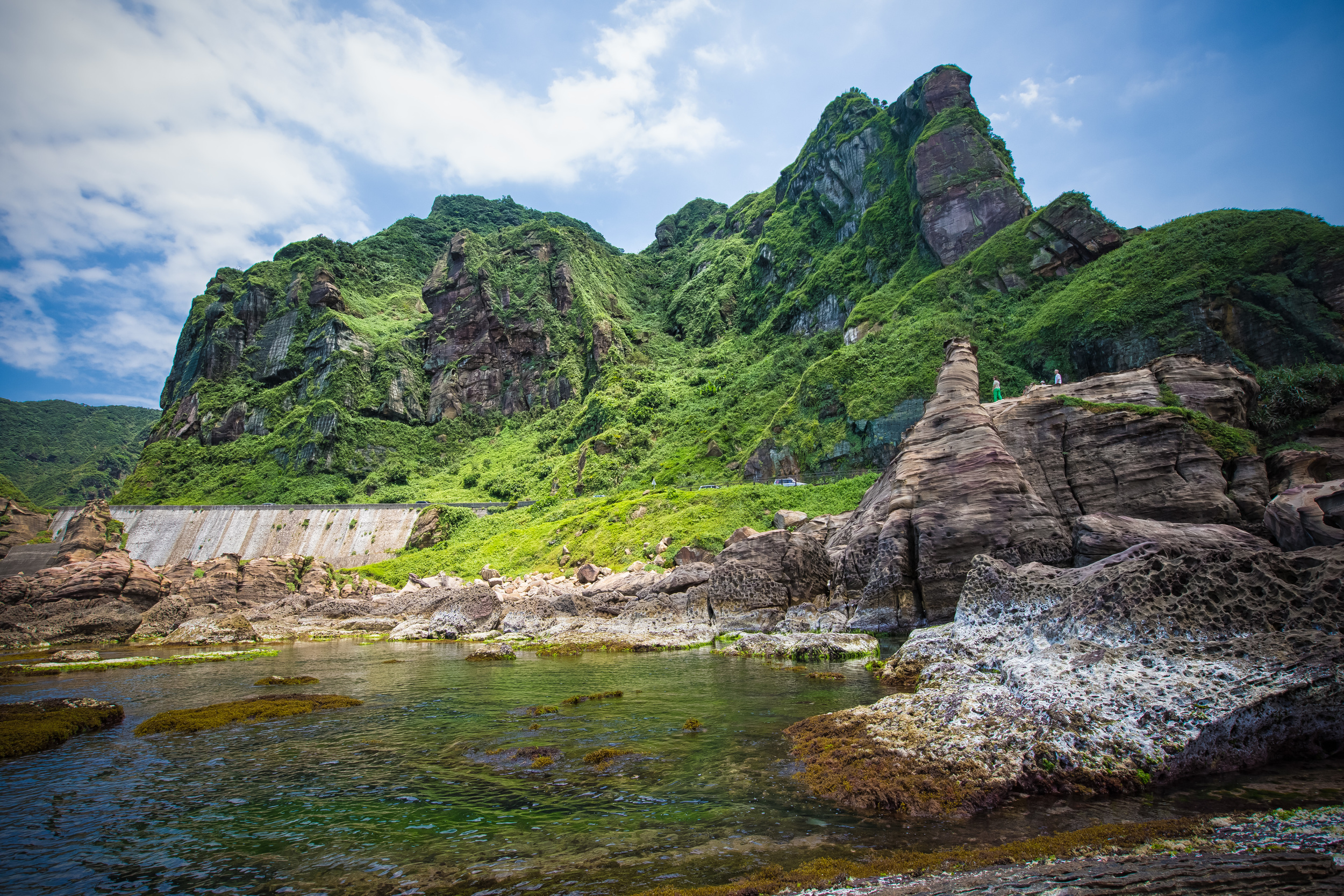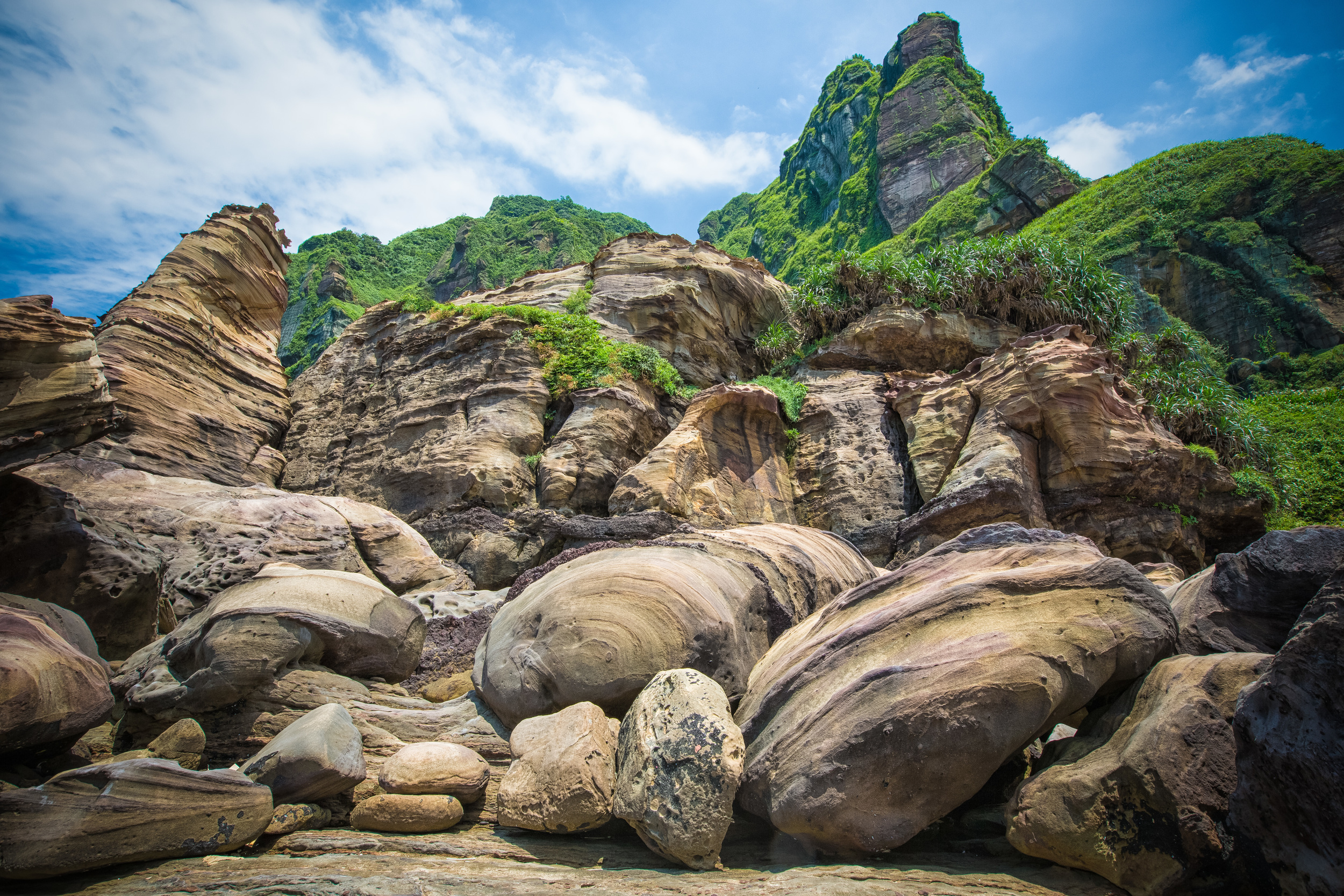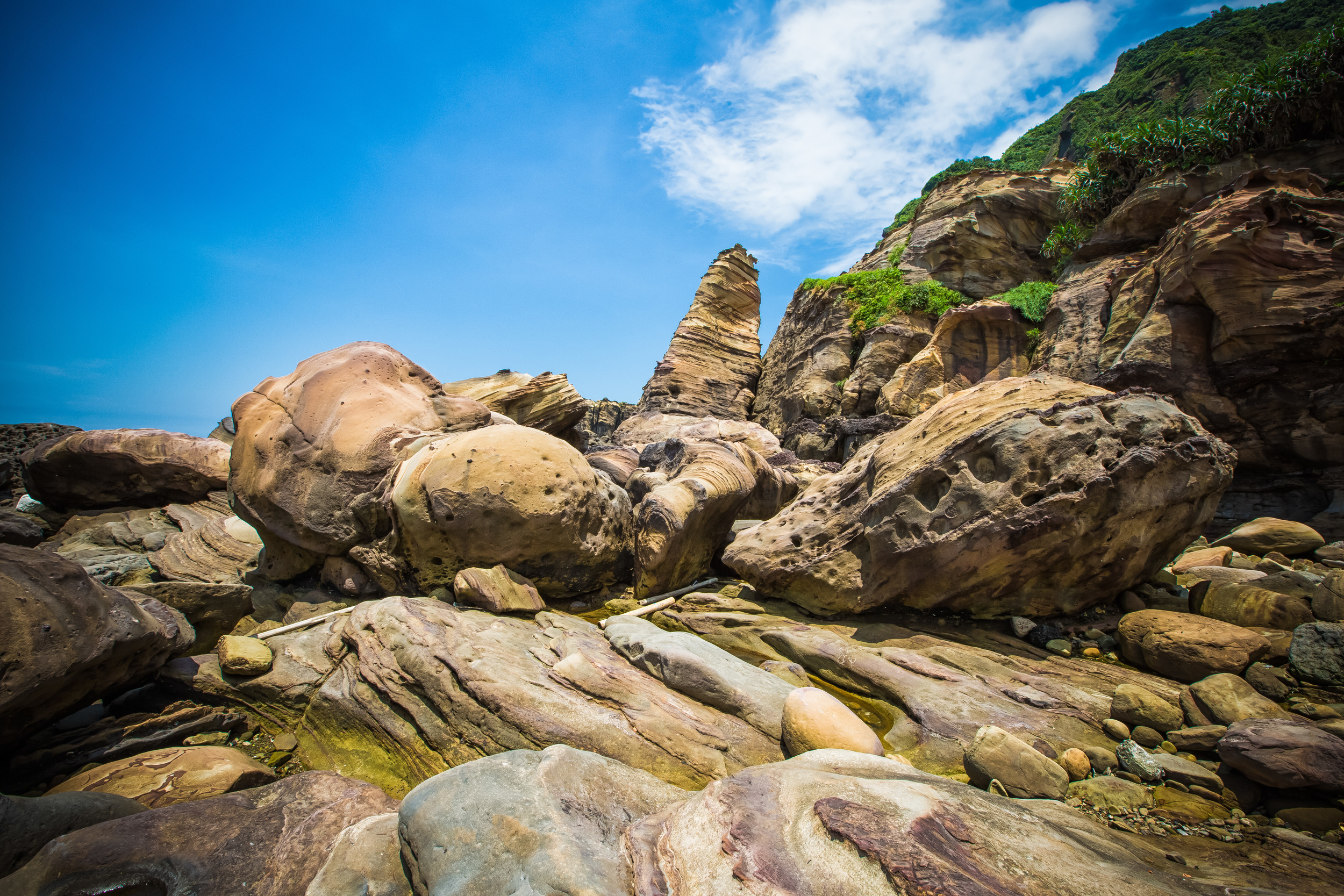If someone who planned on visiting Taiwan asked me for some travel advice, I’m not sure that my suggestions would be very much different than what most other people would say: “Hike a mountain”, “Visit a temple” and “Have dinner at a nightmarket”. Most of the time though, I actually just want to say “Travel South”, “Travel East”, and most importantly: “Get out of Taipei!”
For some people though, leaving the city was never actually an option or a consideration.
So what’s the next best thing? If you’re asking me, I think it would be renting a car or scooter and taking a day trip to the North Coast.
Not only is the North Coast one of the prettiest areas of Taiwan, it is also jam-packed full of places for tourists to visit. It is also home to several beaches and fishery harbours where you can stop for a swim and have the most amazing seafood dinners known to man.
The experience of riding a scooter along the beautiful coast with the Pacific Ocean on one side and tall green mountains on the other is one of those things that you’ll always remember when you think back to your time in Taiwan.
You’ll also want to stop every few minutes to take photos!
With so many things to see and do, its understandable that most tourists have a bit of difficultly deciding where to spend their precious time - There are of course some places that are considered must-stops - The Yehliu Geopark (野柳地質公園), Golden Waterfall (黃金瀑布), Nanya Peculiar Rocks (南雅奇石), Shen’Ao Elephant Trunk Rock (深澳象鼻岩) and the beautiful nature hike at Bitou Cape (鼻頭角), are a few such examples.
The thing is though, unless you have your heart set on a photo with the ‘Queens Head’ (女王頭), I’m going to suggest that you save some time and just skip the overly crowded Yehliu Geopark.
Yes, I realize that sounds like tourist blasphemy, but the North Coast is full of similar-looking landscapes and cool-looking rocks, so you might be better off taking the road less travelled and enjoying some of the less crowded locations.
If you do you should easily be able to hit all of the other must-stop destinations in a single day-trip (if you start early)
While I can’t predict your itinerary, if I were your guide for the day, I’d probably start with a visit to the Elephant Trunk Rock, followed by the Golden Waterfall, Yin and Yang Sea (陰陽海), Nanya Rocks and then Bitou Cape before heading back in the direction of Taipei.
I’d probably end the day with dinner at one of the fishery harbours, the Keelung Miaokou Night Market (基隆廟口夜市) or heading up the mountain to Jiufen (九分) to enjoy the sunset.
For those who do take a day trip to explore the coast, the ‘unofficial’ last stop is almost always going to be the Bitou Cape nature trail - The beautiful hike, which for so long was a secret the locals kept to themselves, has become a hot spot for international tourists thanks to the amazing views it provides of the coastal landscape.
Bitou Cape (鼻頭角)
“Bitou Cape”, known locally as “Bitoujiao” (鼻頭角) is one of the three major capes on Taiwan’s northern coast with the other two being Sandiao Cape (三貂角) to the east and Fugui Cape (富貴角) to the west, all of which are popular tourist destinations.
Bitou Cape, which is separated from the North Coast Highway (北部濱海公路) by a narrow fishery harbour is home to a small village of local fishers and a number of seafood restaurants, scuba diving tour groups, a park and the popular hiking trail.
The narrow village, which cuts into the mountain, almost always appears like it is in a perpetual traffic jam as tourists seem to think that they can just drive in to find a parking spot (Pro Tip: You can’t) and with two lanes of traffic trying to traverse the narrow one lane road, its usually a mess.
If you walk in however, you can easily enjoy the quaint little village where the owners of the restaurants will heckle for your business and the park at the far end offers some nice views of the coast.
Most people however visit for the popular ‘Bitoujiao Hiking Trail’ which takes you up and around the mountain where you’ll enjoy amazing views of the coast.
Bitoujiao Trail (鼻頭角步道)
These days, the vast majority of the people visiting Bitou Cape are coming solely for the short (yet rewarding) hike on the Bitoujiao Trail and not the small village below. While I’m sure the restaurants and business owners in the village benefit from the influx of tourists to the area, most people are really only coming to get photos of the beautiful northern coast from the small mountain above the village.
Like a lot of areas around Taiwan these days, the popularity of the Bitoujiao trail has skyrocketed thanks to the ‘Instagram-effect’ with the majority of people visiting not for the hike itself, but the beautiful photos that you’re rewarded with if you take the time to visit.
Unlike some of the other ‘insta-famous’ landscape areas that have become popular in recent years, this one is probably one of the easiest to hike and shouldn’t actually pose much difficulty as the trail is well-developed and doesn’t require any hiking experience.
So, if you plan on bringing grandma and grandpa, don’t worry too much. They’ll be fine.
The total length of the trail is 3.5 kilometres from start to finish, but that number includes a part of the trail that leads to the Bitou Lighthouse (鼻頭角燈塔). That part of the trail is currently under reconstruction and isn’t open to the public. So, I’d estimate that the trail is actually no longer than two kilometres in length.
Likewise, the official estimate of the amount of time that you’ll need to complete the hike is around ninety minutes. Without a trip to the lighthouse though, your trip is going to be considerably shorter, so you’ll probably be able to complete the circuit in about an hour, but that depends on how much time spend taking photos.
So when will the path to the lighthouse re-open? That’s hard to say as there is no official estimate as to when the trail will be fixed. You may think to yourself that you could just do what the fishermen do and walk down to the coast and make your own trail to the lighthouse, but I’d caution you against it. A few months ago a couple of tourists had the same idea and one of them ended up dying while the other was critically injured.
Link: 鼻頭角祕境浪捲1死1傷/祕境非步道 風管處不管?
If you are planning to do this hike, it is important to note that the trail is simply just a well-developed route that takes you around the mountain and although it may seem like a ‘circuit’, its a bit more like a horseshoe.
There are two trailheads for the hike - one starts from within the small village while the other starts a short distance away at the local elementary school. With two trailhead options for starting your hike, you might be wondering which one is the best to start your hike.
There are arguments both for and against starting the hike at either one of the trailheads but as far as I’m concerned, there is really only one option.
The best option for starting this hike is from the Bitou Elementary School side.
Let me tell you why.
The first reason is because if you’ve driven there, parking your scooter or car in the small parking lot along the highway (or along the road to the school) is relatively easy. Likewise if you take the bus, the bus stop is next to the road that takes you up the hill to the elementary school.
The most important reason though is that if you start your hike from this trailhead that you’ll be walking in the direction of all the beautiful scenery, which you’d probably miss if you started from other side, unless of course you’re weird and you make a habit of walking backwards. There are also considerably less stairs to walk up if you start from this side.
How you hike the trail of course is up to you, but if you start your hike from the Elementary School, you’ll be able to easily park your vehicle, enjoy the scenic beauty and finally enjoy a bit of the village where you can buy some after-hike snacks from some of the vendors before heading back to your vehicle or the bus stop.
Getting There
When you look at the map, it might seem like getting to Bitou Cape could be difficult, but don’t let its location fool you, you can easily get there if you have your own means of transportation or through the use of public transportation.
If you’re driving a car or a scooter, all you’ll have to do is input “Bitou Cape” (鼻頭角) into your GPS and let it do all the work for you. If you’re traveling in a car from Taipei, you’ll want to get on the highway and head north until you reach the Dahua Interchange (大華交流道) where you’ll switch to the #62 Expressway (62快速公路). From there you’ll drive until you reach the north coast where you’ll switch to the North Coast Highway (濱海公路) which you’ll follow until you reach Bitou Cape.
If you’re driving a scooter you’re going to have to take a much less direct route to either Keelung (基隆) or Ruifang (瑞芳) where you’ll be able to reach the coastal highway.
I highly recommend that if you’re taking this option that you use the scooter directions option in Google Maps to map out the best route as there are way too many options to list here.
If you’re taking public transportation you have a couple of options: The first is to take the train to either Keelung Train Station (基隆車站) or Fulong Train Station (福隆車站) and then transferring to Bus #791.
If you take the train to Keelung, you’ll have to sit through a long bus ride along the bus North Coast highway where the traffic can be quite heavy. If on the other hand you take the train to Fulong and transfer to the bus from there, the bus ride is much shorter.
Bus #791 runs from 6:00am - 9:30pm every day and shows up in intervals of 30-40 minutes during peak times and every 50-60 minutes during off hours.
No matter where you get on the bus, you’ll want to make sure to get off at the “Bitou Cape” (鼻頭角) stop which has a nicely constructed and covered bus stop. It should also go without saying that if you get on the bus at Keelung Train Station that you should hop on the bus heading towards Fulong and vice versa.
Link: Keelung Bus (基隆客運) #791
If you’d like to take a bus directly from Taipei, simply make your way to Taipei West Station (台北西站) and purchase a ticket for Kuo Kuang Bus (國光客運) #1811 or ##1812 where you’ll get off at the Bitou Cape stop. I would caution you though, these buses don’t run as frequently and even though they might be ‘faster’, you’re going to pay a bit more.
You could also likewise hop on a bus from Ruifang Train Station (瑞芳車站), which is where you’d want to go if you planned on visiting Pingxi (平溪) or Jiufen (九分). From the bus terminal across the street from the train station you’ll want to hop on Keelung Bus #886 or #856, both of which go to Fulong.
The reason why I’m not expanding on the Taipei or Ruifang options is that they are either inconvenient, expensive, slow or will require a lot more waiting around than the first option.
Ultimately its up to you, I’ve provided several options, so choose the one that best fits your itinerary!
Bitou Cape was once considered somewhat of a guarded secret among locals, but the cat is certainly out of the bag as it has become a popular destination over the past few years. Thanks to the effort of photographers and Instagram celebrities, the area has also become a highly-regarded stop for both local and foreign tourists. Considering that it is one of the north coasts most scenic locations, it is definitely one of the places you’re going to want to stop if you’re visiting the area.
Unfortunately at the moment, a large portion of the Bitou Cape Trail is currently under reconstruction and closed to the public. I plan on revisiting when the trail to the lighthouse reopens to get photos of that part of the trail as well as (I hope) better photos.
Until then though, I’m leaving this post here for your reference!
If you plan on visiting Taiwan, a visit to the scenic north coast is one of my most highly recommended day trips, so I hope that you’ll take the time to enjoy some of Taiwan’s most stunning landscapes during your visit to the country!


















